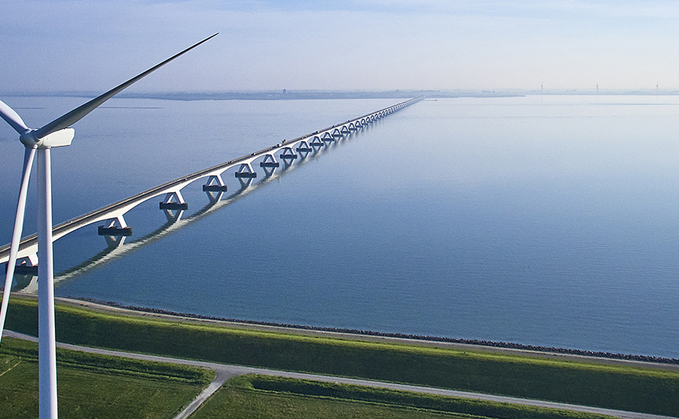
The pandemic continues to create ripple effects in the global economy. From no growth in 2020 to rapid growth in 2021 to slow growth in 2022, we look at 2023 with a base case of recessions in the United States, Europe, and the United Kingdom and growth in China should be below trend for at least a good portion of 2023. We expect bond yields should push higher heading into 2023 before abating along with inflation later in the year.
For equities, contracting multiples driven by higher bond yields have characterized the first part of this bear market. The second phase of bear markets is generally an earnings recession, and we expect that to be a force, particularly in early 2023.
However, we believe the impact on infrastructure should be muted, particularly for regulated assets, where the companies generate their cash flows, earnings and dividends from their underlying asset bases. We expect those asset bases to increase over the next several years. As a result, infrastructure earnings look better protected to us when compared with global equities.
Most infrastructure companies have a link to inflation in their revenue or returns. Regulated assets, such as utilities, have their regulated allowed returns adjusted for changes in bond yields over time. As real yields rise, utilities look poised to perform well (Exhibit 1), and we have currently tilted our infrastructure portfolios to reflect this.
Utilities Poised to Perform Well
US 10-Year Real Yield Vs Utilities Price-to-Earnings (P/E) Ratio As of October 31, 2022
.
Sources: ClearBridge Investments, Bloomberg Finance. Past performance is not an indicator or a guarantee of future results.
As a result, changes in inflation and bond yields don't generally impact the underlying valuations of infrastructure assets. However, we have seen equity market volatility associated with higher bond yields impact the prices of listed infrastructure securities, making them more compelling when compared with unlisted infrastructure valuations in the private markets.
On top of its relative appeal versus equities, we believe infrastructure should benefit from several macro drivers in 2023 and beyond. First, energy security is driving policy globally right now, and a significant amount of infrastructure will need to be built to attain energy security. High gas prices and supply constraints brought on by the Russia/Ukraine war highlighted the importance of energy security and energy investment. This is supportive of energy infrastructure, particularly in Europe, where additional capacity is needed to supplant Russian oil and gas supply, and in the United States, where new basins are starting up, in part to meet fresh demand from Europe.
In transport, changing trade routes and adjustments to supply chains to bring production closer to home, either through reshoring or near-shoring, are driving demand for new transport infrastructure. Airports are still struggling to return to pre-pandemic passenger levels, and which will likely be interrupted by a global recession in 2023. In addition, the industry is facing changes in long-term trends like business travel. Communications infrastructure continues to roll out 5G, develop 6G technology, and is working to reduce network latency, driving significant investments in wireless tower businesses, generally undertaken under long-term inflation-linked contracts. However, in the short term, higher interest costs are hitting the bottom line.
In terms of fiscal policy, the US Inflation Reduction Act (IRA), signed into law in August 2022, is one of the most significant pieces of climate legislation in US history. We believe it will be industry-transformative (Exhibit 2) for utilities and renewables in particular. The growing need for electrification—including more electric vehicles charging infrastructure and more residential and smaller commercial rooftop solar—will require new substations, new transformers and upgraded wires along distribution networks. We already see its impact in the 2023 capital expenditures plans of utilities, together with the forward order books of companies involved in the energy transition—such as renewable, storage and components suppliers—increasing their growth profiles.
IRA Score Card
Inflation Reduction Act's Key Impacts
Source: ClearBridge Investments.
One major macro takeaway from the IRA: there is no reason to build anything other than renewables from now on. The main reason? Tax credits. Production tax credits for solar/wind are available until 2032 or until a 75% reduction in greenhouse gases is achieved (based off 2022 numbers). Either way, this is expected to be a tailwind for investment for well over a decade.
Secular growth drivers for infrastructure should be on full display in 2023. US President Joe Biden wants to reduce emissions by 50% in the United States by 2030, with roughly half of US power coming from solar plants by 2050. It will require nearly US$320 billion to be invested in electricity transmission infrastructure by 2030 to meet net zero by 2050. The dire need for infrastructure spending underpins growth for the next decade and beyond, and the first steps for meeting these long-term goals are being taken now.
Important legal information:
This material is intended to be of general interest only and should not be construed as individual investment advice or a recommendation or solicitation to buy, sell or hold any security or to adopt any investment strategy. It does not constitute legal or tax advice. This material may not be reproduced, distributed or published without prior written permission from Franklin Templeton.
The views expressed are those of the investment manager and the comments, opinions and analyses are rendered as at publication date and may change without notice. The underlying assumptions and these views are subject to change based on market and other conditions and may differ from other portfolio managers or of the firm as a whole. The information provided in this material is not intended as a complete analysis of every material fact regarding any country, region or market. There is no assurance that any prediction, projection or forecast on the economy, stock market, bond market or the economic trends of the markets will be realized. The value of investments and the income from them can go down as well as up and you may not get back the full amount that you invested. Past performance is not necessarily indicative nor a guarantee of future performance. All investments involve risks, including possible loss of principal.
Any research and analysis contained in this material has been procured by Franklin Templeton for its own purposes and may be acted upon in that connection and, as such, is provided to you incidentally. Data from third party sources may have been used in the preparation of this material and Franklin Templeton ("FT") has not independently verified, validated or audited such data. Although information has been obtained from sources that Franklin Templeton believes to be reliable, no guarantee can be given as to its accuracy and such information may be incomplete or condensed and may be subject to change at any time without notice. The mention of any individual securities should neither constitute nor be construed as a recommendation to purchase, hold or sell any securities, and the information provided regarding such individual securities (if any) is not a sufficient basis upon which to make an investment decision. FT accepts no liability whatsoever for any loss arising from use of this information and reliance upon the comments, opinions and analyses in the material is at the sole discretion of the user.
Products, services and information may not be available in all jurisdictions and are offered outside the U.S. by other FT affiliates and/or their distributors as local laws and regulation permits. Please consult your own financial professional or Franklin Templeton institutional contact for further information on availability of products and services in your jurisdiction.
UK: Issued by Franklin Templeton Investment Management Limited (FTIML), registered office: Cannon Place, 78 Cannon Street, London EC4N 6HL. Tel: +44 (0)20 7073 8500. Authorized and regulated in the United Kingdom by the Financial Conduct Authority.
Copyright © 2022 Franklin Templeton. All rights reserved.
This post is funded by Franklin Templeton












